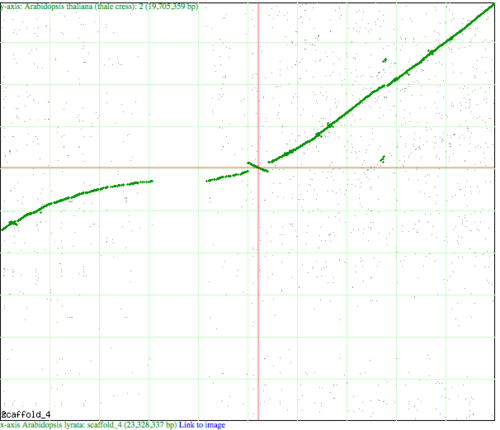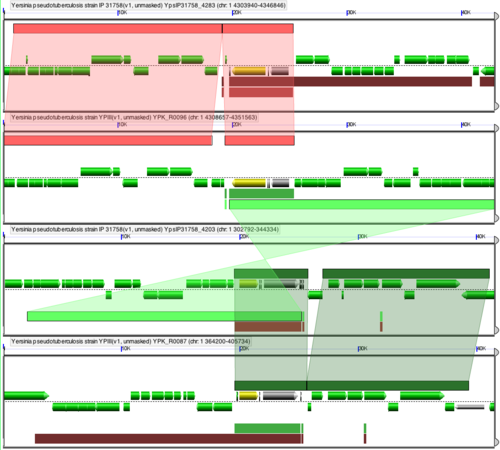Inversion




Definition
A genomic inversion is when a region of a genome or chromosome gets flipped in place. The orientation of this genomic segment changes such that its 5' and 3' ends change places. These usually happen at genomic regions with nearly identical sequence, implying a mechanism similar to non-homologous recombination.
Bacteria
In bacterial genomes, inversion often occur at transposon or ribosomal gene sequences, and happen symmetrically around the origin of replication. The latter causes a characteristic pattern in syntenic dotplots called an x alignment.